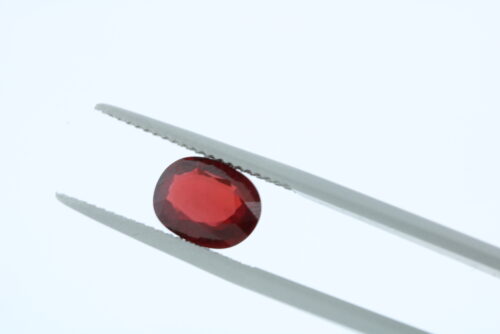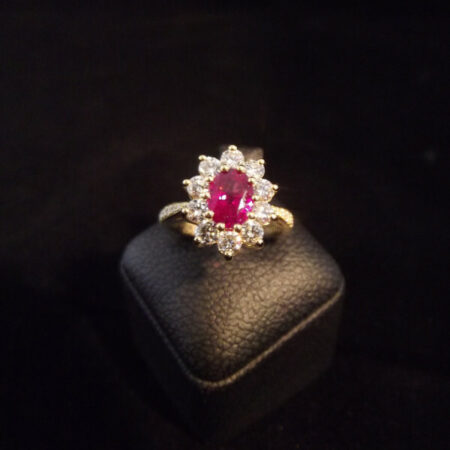What determines the price of rubies?
As with diamonds and other coloured gemstones, the price per carat for rubies depends on the economy and the current market on the one hand, and the value of the ruby in question on the other. Rubies are valued according to the 4 Cs:
1. Carat
Good quality rubies weighing more than 1 carat are very scarce and the price of rubies therefore increases exponentially the greater the carat weight. However, as with other gemstones, carat weight is not what matters most. A ruby with a lower carat weight which does have a deep red colour, optimal clarity and excellent cut quality will be worth more than a ruby with a higher carat weight, but which falls short on the remaining 3 Cs.
2. Clarity
Rubies usually have inclusions. Totally pure rubies are therefore almost never found in practice. The value of the rubies is also affected by the inclusions, if they are strongly visible, the brightness will get weakened and the value will fall dramatically. Also, inclusions that reach the outer surface of the stone can cause fractures and thus affect the ruby’s durability.
Nevertheless, the presence of inclusions does not always have an adverse effect on a ruby’s value. Inclusions caused by minerals are sometimes called "needles" and, for example if there are inclusions of the mineral rutile, one can observe some interesting shapes created by the needles. This is also called “silk”. The presence of silk inclusions creates an optimal light reflection across the various facets. Occasionally those needles form a star effect which in the trade is called asterism and can sometimes be seen when the ruby has a cabochon cut.
3. Colour
Colour has a greater importance when when valuing rubies. Deep red rubies - neither too light nor too dark - are the most valuable. This type of red is often known in the jewellery trade as the red colour of pigeon blood. In other cases, if the colour is too dark, this could affect the brilliance and transparency of the stone but also, if it’s too light, the stone might even be considered as a pink sapphire in certain cases.
4. Cut
When it comes to cutting the rubies, the crystal lattice structure determines the most suitable cut for the stone. Popular cuts for rubies are oval, cabochon and cushion. As rough rubies are very expensive, cutters try to retain as much carat weight as possible when cutting.
Another factor that affects quality of the cut is the so-called optical phenomenon of different colours at different angles known as pleochroism. Rubies can appear red to purple from one angle and at the same time orange-red colour from another. Cutters try to minimise the orange-red colour effect caused by this optical phenomenon, although this is not always possible due to the risk of losing too much carat weight.
Why invest in rubies?
As mentioned above, the price per carat for rubies is quite high. After all, rubies are the second scarcest precious stone after diamonds. Rubies with exceptional qualities are therefore, very sought-after by collectors. Since rubies, like other gemstones, are a natural product whose source is finite, investing in rubies could be quite profitable in a long term. Investing in rubies is also a great way to complement your investment in diamonds.
Investing in rubies is different from investing in colourless diamonds. This is due to the fact that there is a high demand for colourless diamonds, as they are very commercial and they can be sold quickly. On the contrary, rubies are more of a niche market, and the returns depend strongly on selling them at the right time. To sell rubies at a profit, it is also recommended to call on experts who know this niche market inside out such as BNT Diamonds.




